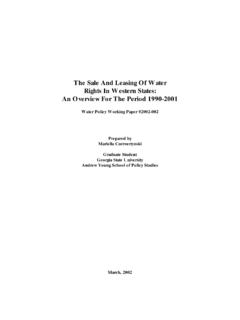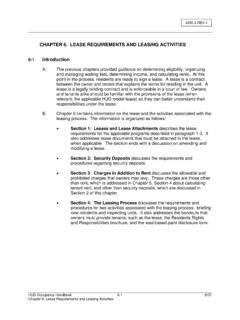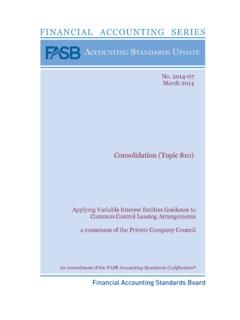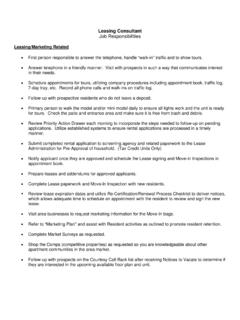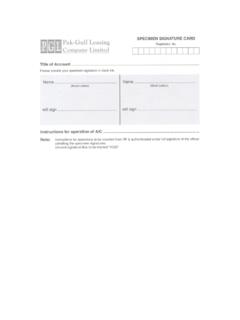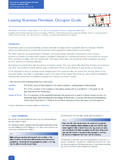Transcription of E A msson Peo Employee Explanation No. 8 Benefit Employee
1 CYCLE A Submission Period 02/01/2016 01/31/2017 EmployeeBenefitPlansExplanation No. 8 EmployeeLeasingNote: Plans submitted during the Cycle A submission period must satisfy the applicable changes in plan qualification requirements listed in Section IV of Notice 2015-84, 2014-52 1 (the 2011 Cumulative List). This publication contains copies of:Form 8386, Worksheet 8 Form 8398, Deficiency Checksheet 8 These forms are included as examples onlyand should not be completed and returned to the Internal Revenue 7003 (Rev. 4-2016) Catalog Number 48736V Department of the Treasury Internal Revenue Service technical principles in this publication may be changed by future regulations or Number 8 (Form 8386) and this Explanation are designed to aid the specialist in deciding whether any quali-fication issue arising by reason of section 414(n) of the Code needs to be covered and, if so, whether the requirements of that section are worksheet and Explanation (except for the procedural information in Part I) are based on the statute itself and on various questions and answers in Notice 84-11, 1984-2 469 and Rev.
2 Proc. 2002-21, 2002-1 911, as amplified by Rev. Proc. 2003-86, 2003-2 1211. Until applicable regulations are published, the guidance provided by these questions and answers and procedures may be relied upon to comply with the provisions of section 414(n).The technical principles reflected in this publication may be changed by future regulations or A Submission Period 02/01/2016 01/31/2017 Page 2I. Required InformationUnless the plan provides that all leased employees within the meaning of section 414(n)(2) of the Code are treated as common law employees for all purposes under the plan, a determination letter issued with respect to the plan s qualification under section 401(a) or 403(a) of the Code will be a determination as to the effect of section 414(n) upon the plan s qualified status only if the application includes:1.
3 A description of the nature of the recipient organization;2. A copy of the relevant leasing agreement;3. A description of the function of all leased employees within the trade or business of the recipient organization (including data as to whether all leased employees are performing services on a substantially full-time basis) and whether services are performed under the primary direction or control of the recipient organization; and4. If the recipient organization is relying on any qualified plan(s) maintained by the leasing organization for purposes of qualification of the recipient organization s plan, a description of such plan(s) (including a description of the contributions or benefits provided for all leased employees which are attributable to services performed for the recipient organization, plan eligibility, and vesting).
4 Rev. Proc. 85-43, 1985-2 501II. Applicability of Section 414 (n)If the answers to a., b., c. and d. are Yes the plan sponsor is a recipient within the meaning of section 414(n)(1) of the Code; the per-sons performing the services for the recipient pursuant to the agreement are leased employees within the meaning of section 414(n)(2); and the person that the recipient has the agreement with is a leasing organization within the meaning of section 414(n)(2)(A). Leased employees are considered to be employees of the recipient organization for purposes of the requirements set forth in section 414(n)(3)(A) and (B), even though they are common law employees of the leasing organization, unless (i) they are covered by a safe harbor plan of the leasing organization, and (ii) leased employees (including those covered by a safe harbor plan) do not constitute more than 20 percent of the recipient s nonhighly compensated work force.
5 To constitute a safe harbor the leasing organization s plan must meet the requirements set forth in section 414(n)(5)(B), which are reflected in part III of a. The term leased Employee , as defined in section 414(n)(2) of the Code, specifies that a leased Employee is a person who is not an Employee of the recipient. This specification was added by Pub. L. 98-369 (DEFRA) in 1984. Section 414(n)(6) defines related persons and also states that the rules of section 414(b), (c), (m) and (o) shall b. The agreement between the parties may be oral or written. An individual who is actually a common law Employee of the recipient will not become an Employee of another entity merely because the recipient enters into a formal leasing agreement with the other 84-11 Q&A 6 Line c. A person is considered to have performed services on a substantially full-time basis for a period of at least one year if: (i) during any 12-consecutive-month period such person has performed at least 1500 hours of service for the recipient, or(ii) during any 12-con-secutive-month period such person performs services for the recipient for a number of hours at least equal to 75 percent of the average number of hours that are customarily performed by an Employee of that recipient in the particular position.
6 The one-year period includes service of the Employee prior to the effective date of section 414(n). In addition, any period of service performed by the Employee as a common law Employee of the recipient is taken into account for purposes of determining whether the Employee has performed services on a substantially full-time basis for a period of at least one 84-11, Q&A 7 Notice 84-11, Q&A 8 & 12 Line d. Whether services are performed by an individual under primary direction or control by the service recipient depends on the facts and circumstances. In general, primary direction and control means that the service recipient exercisesthe majority of direction and control over the individual. Factors that are relevant in determining whether primary direction or control exists include whether the individual is required to comply with instructions of the service recipient about when, where, and how he or she is to perform the services, whether the services must be performed by a particular person, whether the individual is subject to the supervision of the service recipient, and whether the individual must perform services in the order or sequence set by the service recipient.
7 Factors that generally are not relevant in determining whether such direction or control exists include whether the service recipient has the right to hire or fire the individual and whether the individual works for Report 1982-2 522, 679 IRC 414(n)(2)(C)III. Safe HarborSection 414(n)(5) of the Code provides a safe harbor for a recipient organization if two conditions are met:(i) The leasing organization maintains a qualified nonintegrated money purchase pension plan that provides for an annual contribution CYCLE A Submission Period 02/01/2016 01/31/2017 Page 3by the employer of 10 percent of total compensation (defined below) for each participant, full and immediate vesting, and immediate participation by each Employee of the leasing organization (other than employees who perform substantially all of their services for the leasing organization).
8 The requirement as to immediate participation does not apply to any individual whose compensation from the leasing organization in each plan year during the 4-year period ending with the plan year is less than $1,000.(ii) Leased employees do not constitute more than 20 percent of the recipient s nonhighly compensated work force. The term nonhighly compensated work force means the aggregate number of individuals (other than highly compensated employees within the meaning of section 414(q) of the Code):(A) Who are employees of the recipient (other than leased employees) and have performed for the recipient (or for the recipient and related persons) on a substantially full-time basis for a period of at least one year, or(B) Who are leased employees with respect to the recipient (including those excludible if the safe harbor rule applies).
9 The term compensation has the same meaning as when used in section 415, except that it includes:(A) employer contributions under a qualified cash or deferred arrangement to the extent not included in gross income under section 402(e)(3) or 402(h)(1)(B).(B) any amount which the Employee would have received in cash but for an election under a cafeteria plan, and(C) any amount contributed to a section 403(b) annuity contract pursuant to a salary reduction both of these requirements are met, the leased employees participating in the safe harbor plan need not be considered employees of the recipient for any purpose pertaining to the requirements listed in section 414(n)(3)(A), (B) and (C).Sec. 414(n)(5)(C)(ii) and (iii)IV. RequirementsLine a. How leased employees will be treated under the recipient s plan depends on the terms of the plan.
10 Therefore, if an organization utilizes the services of leased employees theplan must specifically provide how leased employees will be treated under the recipient s 84-11, Q&A 16 Line b. Although the plan must treat these employees as though they are the recipient s employees, the fact that a leased Employee is not covered by the recipient s plan does not necessarily mean the recipient s plan does not qualify. A plan may still meet the coverage requirements of section 410, even though none of those leased employees is covered. Any contributions made or benefits funded by the leasing organization on behalf of a leased Employee are deemed to be provided by the recipient at such time as the leased Employee is required to be covered under the recipient s 84-11, Q&A 14, 15 Notice 84-11, Q&A 17 Line c.










